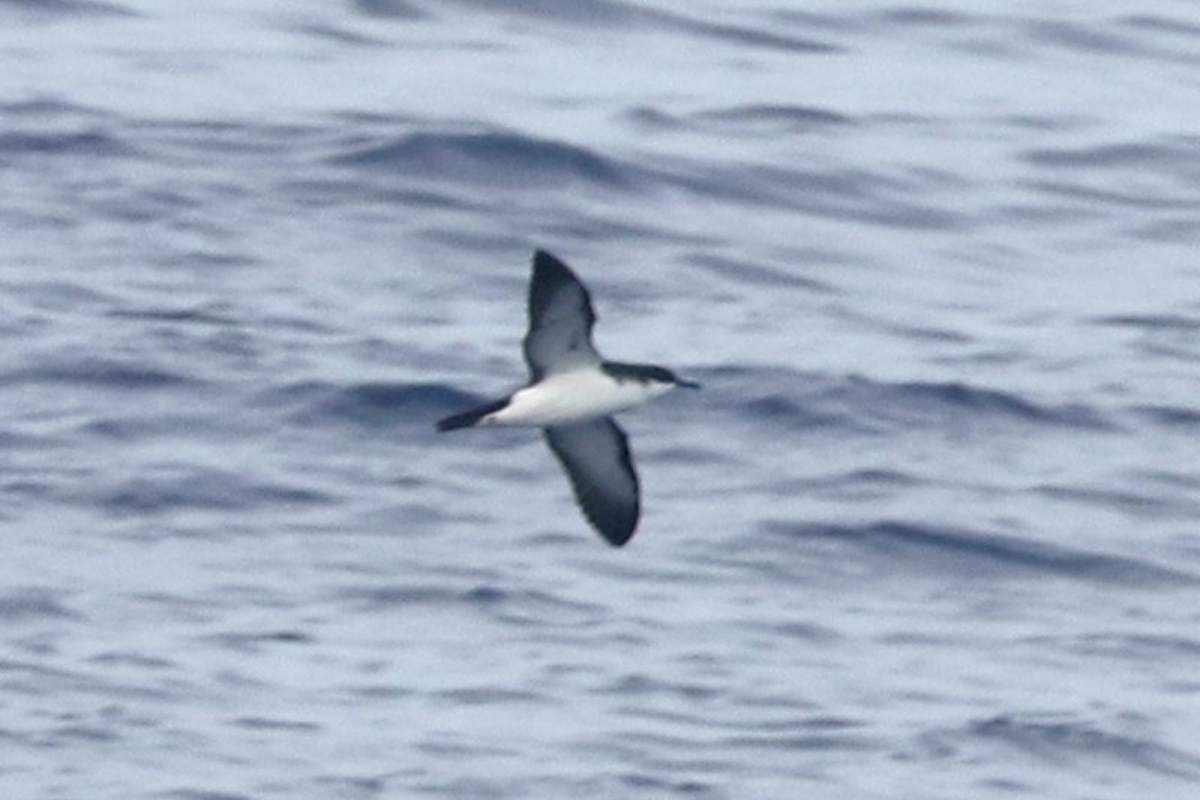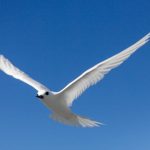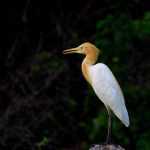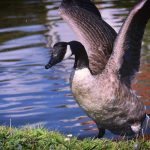Common Name: Newell's Shearwater
Scientific Name: Puffinus newelli| Size | Diet | Range in Hawaii | Status in Hawaii |
|---|---|---|---|
| 11 in. | small fish and squid | Big Islands | Critically Endangered |
Newell’s Shearwater (Puffinus newelli) is a seabird species that belongs to the family Procellariidae, which includes other shearwaters, petrels, and fulmars. It is native to the Hawaiian Islands, where it is also known as the ‘a’o.
Newell’s Shearwater
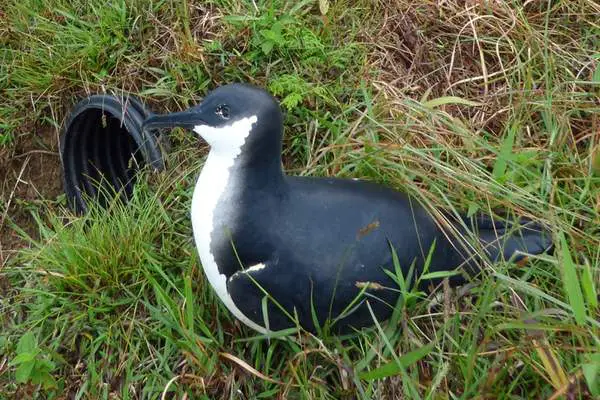
Appearance
Newell’s Shearwater is a medium-sized shearwater, with a wingspan of approximately 30 inches and a body length of around 11 inches. The adult has a dark brown head and upperparts, with a white breast and belly. Juvenile birds have a mottled brown plumage.
Diet
Newell’s Shearwater is a seabird that feeds primarily on small fish and squid, which it catches by diving into the water from the air. It forages over a wide area, often traveling many miles from its breeding colonies to find food.
Like other procellariid birds, Newell’s Shearwater has a specialized digestive system that allows it to extract nutrients from its prey and discard indigestible matter such as beaks and bones. This is accomplished by a process called “pelleting,” in which the birds regurgitate small, hard pellets that contain the indigestible material.
In addition to their diet of fish and squid, Newell’s Shearwater may also occasionally feed on other marine animals such as crustaceans and small cephalopods. It is thought that the birds locate their prey using their keen sense of smell, which is enhanced by the presence of a gland near the nostrils that produces an oil used to moisten the bill and help pick up scents.
Behavior
Newell’s Shearwater is generally nocturnal, only coming ashore at night to breed and forage for food. During the day, it spends most of its time resting on the water or flying long distances in search of food.
Newell’s Shearwater is known for its distinctive flight style, which involves alternating between gliding and flapping its wings. When gliding, the bird extends its wings and flies with a pronounced dip and rise motion.
When flapping, it folds its wings and beats them quickly and powerfully. This flight style helps the bird conserve energy while still allowing it to cover large distances in search of food.
Nesting
The birds form monogamous pairs and nest in burrows on cliffs and in forested areas. Both parents take turns incubating the egg and feeding the chick. Before laying an egg, the pair will often engage in courtship behaviors such as bill-tapping and duetting.
Once the egg is laid, the female typically incubates it for about 50 days while the male brings her food. After the chick hatches, both parents take turns feeding it by regurgitating partially digested fish and squid into its mouth. The chick grows rapidly and fledges (leaves the nest) after about 10-12 weeks.
Newell’s Shearwater is known for its strong pair bond and loyalty to its breeding site. Many birds return to the same burrow year after year to breed. However, the species is also capable of adapting to changes in its environment, and will sometimes nest in new locations if necessary.
Habitat and range in Hawaii
Newell’s Shearwater is a seabird species native to the Hawaiian Islands. It breeds on the islands of Kauai and Oahu in Hawaii.
Newell’s Shearwater is found in a variety of habitats, including coastal cliffs, forested areas, and agricultural lands. It is adapted to living in a marine environment and is able to forage over a wide area in search of food.
Conservation Status
Newell’s Shearwater is classified as Critically endangered by the International Union for Conservation of Nature (IUCN) due to habitat loss, predation by introduced species, and accidental mortality from human activities such as light pollution and collision with man-made structures. Conservation efforts are underway to protect this species and its habitat, including the establishment of protected areas and the control of introduced predators.
Interesting Facts
1. They are medium-sized seabirds
Newell’s Shearwaters are medium-sized seabirds, with a wingspan of about 30 inches and a body length of about 11 inches. They have a dark brown head, wings, and tail, with a white belly and underwing coverts.
2. They are known for their distinctive shearing flight
Newell’s Shearwaters are known for their distinctive shearing flight, in which they glide close to the surface of the water while using their wings to “shear” the air. This allows them to cover long distances efficiently while hunting for food.
3. They are pelagic
Newell’s Shearwaters are pelagic, meaning that they spend most of their lives at sea and only come to land to breed. They breed on a few small islands in the Hawaiian archipelago, including Kauai, Oahu, and Molokai.
4. They are nocturnal breeders
Newell’s Shearwaters are nocturnal breeders, meaning that they mate and lay eggs at night. They nest in burrows or cavities in the ground, and both parents help to incubate the eggs and feed the chicks.
5. They are threatened by habitat loss
Newell’s Shearwaters are threatened by habitat loss, predation by introduced species, and light pollution. They are also vulnerable to accidental entanglement in fishing gear and collisions with man-made structures, such as power lines and wind turbines.
Frequently Asked Questions
What do Newell’s Shearwaters eat?
Newell’s Shearwaters primarily feed on small fish, squid, and other marine invertebrates, which they locate by sight and by using their keen sense of smell. They also occasionally feed on small crustaceans and other small prey.
How long do Newell’s Shearwaters live?
The lifespan of Newell’s Shearwaters is not well known, but it is thought to be at least several years. Some individuals may live for over a decade.
How do Newell’s Shearwaters communicate?
Newell’s Shearwaters communicate through vocalizations, which are mainly used for territorial and mating purposes. They also use body language and gestures, such as head-bobbing and wing-flapping, to communicate with each other.
